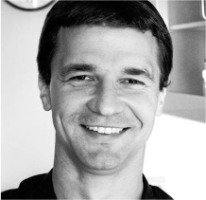Endeared Friends, all #Brachymen and #WomenWhoCurie,
The second wave of the COVID-19 threat is on its raise. This fall is uncertain in terms of our possibilities to serve our patients as we normally could. In Poland, for instance, the SARS-CoV-2 claimed about two and a half thousand victims since the outbreak in March, which is sad. On the other hand, cancer takes two thousand oncological patients a week! Our daily practice is being changed due to safety regulations. It is often difficult to cope with these rules, as they take us away from patients and vice versa, cause social distance, consume our time, and progress the level of stress at work.
But #WeAreBrachy, #WeDoBrachy. And that was the reason why the Polish Brachytherapy Society members have met in Katowice, attending this year’s world’s only congress of brachytherapy. Our 7th Biannual Conference went smoothly, safely, and fruitfully. WE DID IT! And we would do it again. Please, find more details in the Presidential Digest by Dr. Piotr Wojcieszek. Also, please pay attention to the obituary attached, in which Piotr says goodbye to the unforgettable late Dr. Brygida Białas (1959-2020) – R.I.P.
I decided to open the JCB 5/2020 issue with a very interesting and important results of interventional radiotherapy used as an exclusive treatment for primary nasal vestibule cancer. Luca Tagliaferri et al. confirmed that interstitial brachytherapy could be considered as a definitive treatment in this relatively rare indication. Excellent oncological and cosmetic outcomes speak for themselves. With this knowledge, the patients should be informed about the possible avoidance of surgery, with the most probable cosmetic changes on their faces.
Korean investigators from CHA University submitted their findings on the feasibility and early toxicity of focal or partial LDR brachytherapy in prostate cancer patients. As suggested, it was comparable to the whole prostate LDR-BT concerning the short-term biochemical recurrence and toxicities. A completely different approach for the LDR seeds is presented by a Chinese group. In the prospective single-arm pilot study, endovascular implantation of 125I seed strands combined with stent placement for locally advanced pancreatic ductal adenocarcinoma with vascular invasion was successfully explored.
Antonio Cassio Pellizzon et al. (Sao Paulo, Brazil) added to the literature their findings on HDR-BT using the Leipzig applicators for non-melanoma localized skin cancer. They pointed out the differences between the SCC and BCC treatment results, with suggested prescribed doses and reported toxicity.
The next clinical investigation was created in cooperation between Thailand and the UK. New terms of Vex, Rex, and iRex are to be carefully read and learned. The paper is on excess dose-related parameters, which are novel predictors, and correlate with late toxicity in cervical cancer image-guided adaptive brachytherapy. Careful reading is recommended.
In line, still related to cervical cancer adaptive brachytherapy, Chinese authors presented a predictive value of Excel forms based on an automatic calculation of EQD2. The in-house designed application quickly reads the DVH parameters from the TPS and enables a balance between the total dose to target volumes and that to OARs.
For the third time, Georgina Fröhlich et al. (Hungary) shared their results of biological dose summation of EBRT and image-guided HDR interstitial BT; this time in the treatment of the whole breast with a boost in early-stage breast cancer. As they concluded, the total dose of PTV in the breast was higher using the BT boost than for the whole breast with EBRT. BT boost yields lower skin, lung, and heart doses, but a higher dose to the ribs.
The second physics contribution, submitted by Iran-UK cooperating group, focused on the development of a novel and low-cost 3D-printed anthropomorphic pelvis phantom for 3D dosimetry of radiotherapy with thermoluminescent dosimeters, TLDs.
The current issue of JCB contains two technical notes. The first one is on the feasibility of interstitial stepping-source electronic brachytherapy of locally inoperable tumors (Heidelberg University, Germany). The second one presents a novel technique of transvaginal artificial ascites infusion via a vaginal wall as a spacer in gynecological BT. This is the first report on such an approach, and originates from Tokyo, Japan.
A single case report comes from the European Institute of Oncology (Italy) and describes successful salvage HDR interstitial BT for perineal recurrence of prostate cancer after surgery and radiotherapy.
The next is a review paper by Bruno Fionda et al. (Rome, Italy) on artificial intelligence (AI) and interventional radiotherapy (brachytherapy). The authors presented the state-of-art and future perspectives for AI, which may contribute to improving clinical outcomes through the application of predictive models and creating decision supporting systems. We are eagerly waiting to see what the future holds.
And finally, the Educational Corner! After a series of rounds of reviews, the Indian Brachytherapy Society members completed their important document: Brachytherapy in H&N malignancies – IBS recommendations and guidelines. This is certainly something to be read and discussed with the authors. To the guidelines, I gladly present an invited educational article on the role of imaging in head and neck cancer. An overview of different imaging modalities in primary diagnosis and staging of H&N cancerous disease was written by Veena Vishwanath et al. (United Kingdom). The authors’ most important conclusion was that all described modalities of imaging have a strong influence on the treatment planning, and therefore an understanding of the merits of each type and the timing of optimal imaging for anatomical characterization as well as the accurate staging are essential.
Most of you must be aware of the forthcoming 7th of November. I suppose, all #WomenWhoCurie feel the date with their hearts. Here, I would like to remind the Letter to the Editor by prof. Tomasz Pospieszny published last year in the JCB 6/2019 [1]. I think it is worth reading again.



